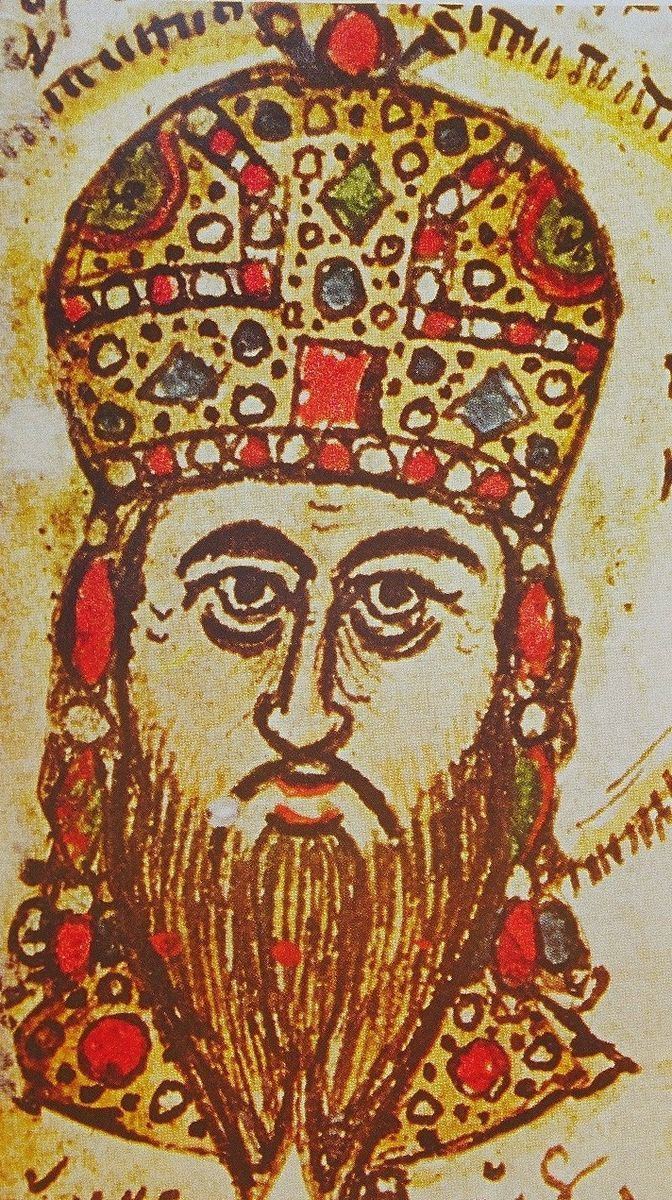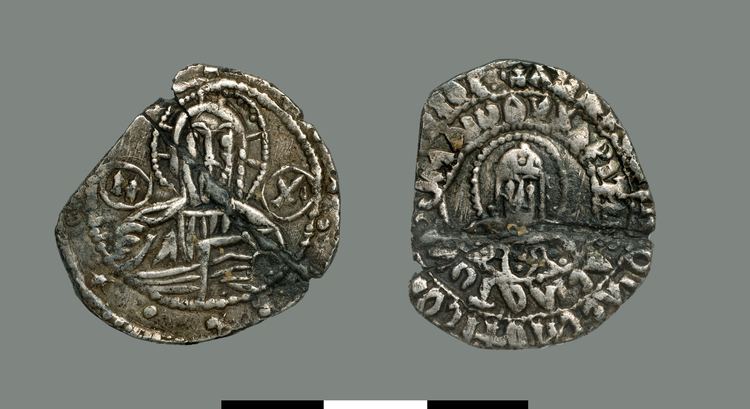Name Andronikos Palaiologos House Palaiologos | Father John V Palaiologos Children John VII Palaiologos | |
 | ||
Reign 12 August 1376 – 1 July 1379 Parents Helena Kantakouzene, John V Palaiologos Similar People | ||
Andronikos IV Palaiologos
Andronikos IV Palaiologos | Wikipedia audio article
Andronikos IV Palaiologos (Greek: Ἀνδρόνικος Δ' Παλαιολόγος; 11 April 1348 – 25/28 June 1385), often Latinized as Andronicus IV Palaeologus, was the eldest son of Emperor John V Palaiologos. Appointed co-emperor since 1352, he had a troubled relationship with his father: he launched a failed rebellion in 1373, usurped the throne in 1376–1379, and remained engaged in a bitter struggle with John V until his death in 1385. This civil war depleted Byzantium's scarce resources and greatly facilitated the Ottoman conquest of the Balkans, most notably through the cession of Gallipoli by Andronikos.
Contents

Life

Born on 11 April 1348, Andronikos IV Palaiologos was the eldest son of Emperor John V Palaiologos by his wife Helena Kantakouzene. Already in 1352 he was associated as co-emperor with his father, and when John V left for Italy in 1369 to affirm his submission to the Pope, John left Andronikos behind in Constantinople as regent, while his younger son Manuel II Palaiologos was sent to govern Thessalonica.
During his stay in Italy, John attempted to settle his accounts with the Republic of Venice; this included not only John's own loans, but also the loan of 30,000 ducats (and the associated interest) that his mother, Anne of Savoy, had taken during the Byzantine civil war of 1341–1347, with the Byzantine crown jewels as collateral. John went in person to Venice, but he lacked the funds to pay off the loans, or even to secure a ship for his voyage home. As a result, he proposed to cede to the Venetians the island of Tenedos, strategically located at the entrance of the Dardanelles, in exchange for further funds and six warships. The Venetians accepted, but when news reached Constantinople, Andronikos IV, likely urged by the Genoese, Venice's commercial rivals, refused to honour his father's agreement. This left John stranded in Venice, effectively as a captive debtor of the Republic; when he suggested that funds be raised to secure his release by selling precious objects from the churches, Andronikos again refused, claiming that this was impious. In the end, it was only the intervention of Manuel, who went from Thessalonica to Venice in person, that secured John's release. It was not until October 1371 that the emperor returned to Constantinople.
Andronikos IV rebelled when the Ottoman sultan Murad I forced John V into vassalage in 1373. Andronikos IV had allied with Murad's son Savcı Bey, who was rebelling against his own father, but both rebellions failed. Andronikos was imprisoned and subjected to blinding–the traditional Byzantine punishment for rebellion—but apprently only in one eye. His brother Manuel replaced him as heir.
Reign
In July 1376, the Genoese helped Andronikos to escape from prison, whence he went straight to sultan Murad I, and agreed to return Gallipoli in return for his support. Gallipoli had been retaken by the Byzantines ten years before, with the assistance of Amadeus VI, Count of Savoy. The sultan duly provided a mixed force of cavalry and infantry and with these, Andronikos was able to take control of Constantinople. Here he was able to capture and imprison both John V and his son Manuel.
However, he made the mistake of favouring the Genoese too highly by awarding them Tenedos. The governor there refused to hand it over, and passed it on to Venice. In the same year, 1377, he crowned his young son John VII as co-emperor. However, in 1379 John and Manuel escaped to sultan Murad, and with the assistance of the Venetians, overthrew Andronikos later in the year. The Venetians restored John V to the throne, and Manuel II. Andronikos fled to Galata, staying there until 1381, when he was once again made co-emperor and heir to the throne despite his earlier treachery. Andronikos IV was also given the approaches to Constantinople with the city of Selymbria (Silivri) as his personal domain.
In 1385, he rebelled again, but died soon after, on 25 or 28 June, at Selymbria. He was buried in the Pantokrator Monastery in Constantinople.
Family
In 1356, Andronikos IV married Keratsa of Bulgaria, a daughter of Emperor Ivan Alexander of Bulgaria. The couple had one son, John VII Palaiologos.
